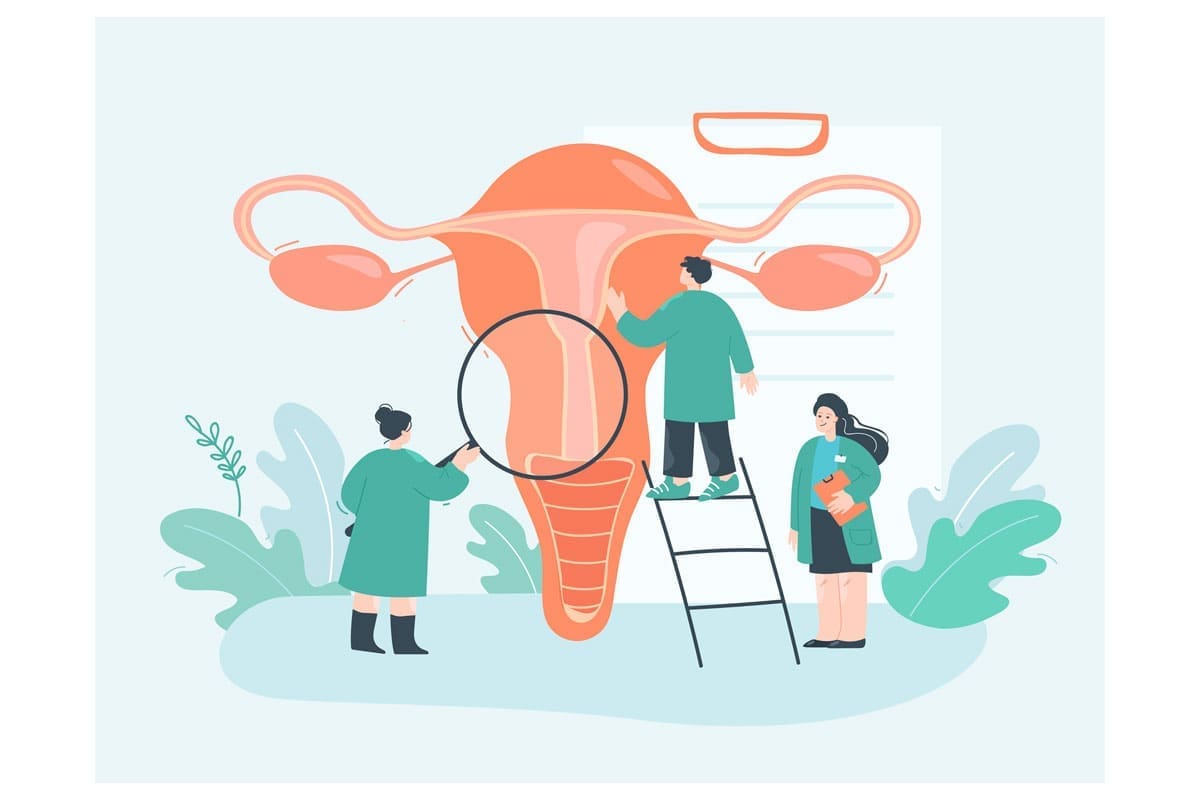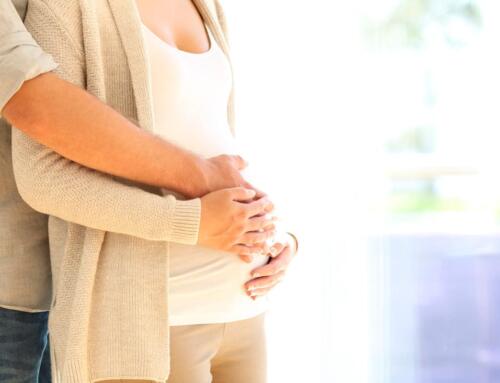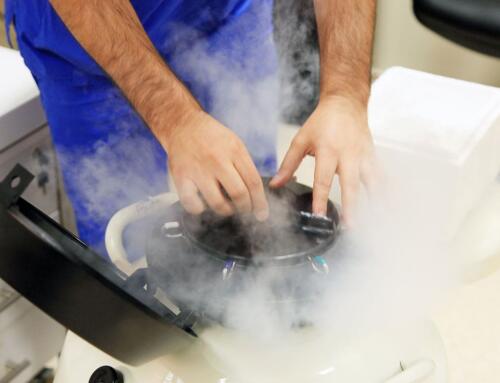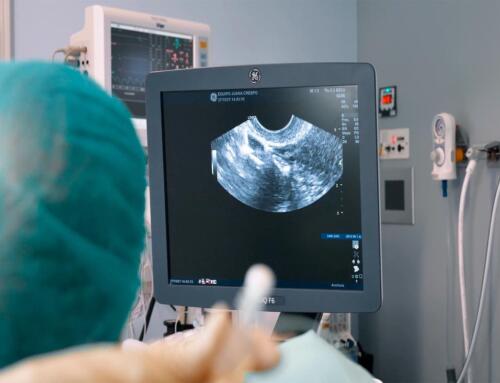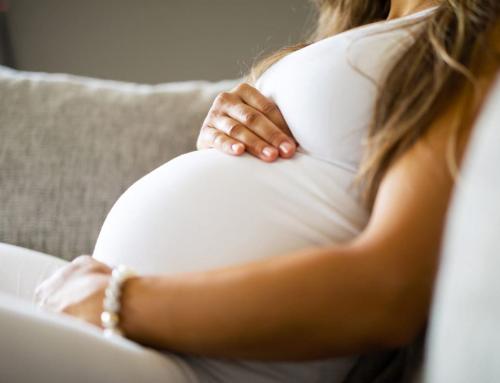The uterus, also known as the ‘womb,’ plays a crucial role in the female reproductive system. Comprising three layers—endometrium, myometrium, and perimetrium—it facilitates embryo implantation, fetal development, and vital events such as sperm transport and fetal nourishment.
- The endometrium, the innermost layer, is a mucous lining where embryo implantation occurs.
- The myometrium, the thick middle layer, consists mainly of muscles and muscle fibers.
- The outermost and thinnest layer, the perimetrium, covers the uterus entirely.
What function does the uterine myometrium perform?
As we have mentioned, the myometrium constitutes the middle layer of the uterus making up the majority of the organ. It is notably firm because it consists mostly of densely packed muscle fibers, although it also contains connective tissues and blood vessels.
In fact, within the myometrium, there are blood vessels, lymphatic vessels, and nerves.
Furthermore, the myometrium is organized into three layers:
- An outer layer formed by smooth and longitudinal muscles.
- A middle layer formed by crisscrossing muscle fibers.
- An inner layer, called the “junctional” layer, formed by circular fibers.
The predominant layer of the myometrium is the outer layer, which is particularly contractile.
From a physiological perspective, the myometrium is the most flexible tissue in a woman’s body, as it can expand significantly during pregnancy to facilitate the growth of one or more fetuses- an essential function.
Another function that the uterine myometrium performs, crucial for reproduction, is contracting during labor to propel the fetus and placenta.
Additionally, after childbirth, the muscle fibers in the myometrium continue to contract to return to their natural state, compressing blood vessels and minimizing the risk of postpartum hemorrhage and blood loss.
Endometrium and Myometrium: How Do They Affect Fertility?
The endometrium and myometrium are the functional layers of the uterus and play a crucial role in reproduction.
In fact, alterations and pathologies in both are relatively common in women of reproductive age and can be the cause of female infertility, recurrent miscarriage, or premature birth.
The main conditions associated with the myometrium are:
1. Adenomyosis
This uterine pathology is closely associated with endometriosis, emphasizing the link between the endometrium and myometrium. Adenomyosis occurs when endometrial tissue, typically covering the uterus’s inner layer, extends into the muscular wall or myometrium.
The condition’s origin remains unknown, but it correlates with estrogen production and commonly diminishes with menopause, particularly towards the end of the reproductive stage (between 40 and 50 years).
Experts distinguish two types of adenomyosis: adenomyomas and diffuse adenomyosis. The latter affects a large part of the myometrium and causes a significant increase in the size of the uterus.
Main symptoms of adenomyosis:
- Menstrual pain (dysmenorrhea).
- Prolonged and heavy menstrual bleeding (menorrhagia).
- Non-menstrual bleeding (metrorrhagia).
- Pain during sexual intercourse (dyspareunia).
- Some women may also experience anemia due to excessive uterine bleeding.
Regarding the treatment of adenomyosis, it depends on the woman’s age and whether she has fulfilled her genetic desire. After imaging diagnosis and depending on its severity, options may include assisted reproduction treatment (IVF, with special emphasis on embryo transfer to enhance implantation) or surgery to remove adenomyosis foci and reconstruct the uterine wall.
The definitive treatment for women who do not desire pregnancy or when symptoms are severe is a hysterectomy.
2. Uterine Atony
This condition occurs when the muscles of the myometrium lose their tone. While this problem does not directly affect fertility, it conditions childbirth, as there is a risk of inadequate contractions, and the chances of postpartum hemorrhage are higher.
The main reasons for uterine atony are excessive stretching of the uterus (in multiple pregnancies), prolonged manipulation during childbirth, or having had several previous pregnancies.
3. Fibroids (Myomas)
Fibroids, also called uterine fibroids, are quite common in women of childbearing age. They are benign tumors that, although often asymptomatic (especially if small), can cause menstrual pain and even blockage of the fallopian tubes or difficulties with embryo implantation when they grow.
Usually, fibroids are removed surgically, and only in severe cases is a hysterectomy recommended.
4. Uterine Sarcoma
Uterine sarcoma is a malignant tumor that develops in the myometrium and affects women of childbearing age. In many cases, fertility preservation techniques such as oocyte cryopreservation are necessary to enable future pregnancies.
This type of tumor is uncommon (most uterine cancers develop in the endometrium), and, as with other gynecological tumors, early detection is crucial for treatment with surgical intervention, chemotherapy, or radiotherapy.
What is a homogeneous myometrium, and what is a heterogeneous myometrium?
Many patients in our clinics inquire about the implications of a heterogeneous myometrium on their future fertility.
Essentially, a homogeneous myometrium is considered ‘normal,’ lacking any lumps or voids.
The term heterogeneous myometrium, or diffuse heterogeneous myometrium, is used when, upon assessment with ultrasounds, the layer of the uterus exhibits irregular or nodular patterns without specific lesions causing the alteration.
Certain conditions related to the uterus, particularly the myometrium, may impact fertility.
At Equipo Juana Crespo, we specialize in intricate assisted reproduction, offering personalized treatments for cases such as heterogeneous myometrium. Feel free to contact us with any inquiries!


